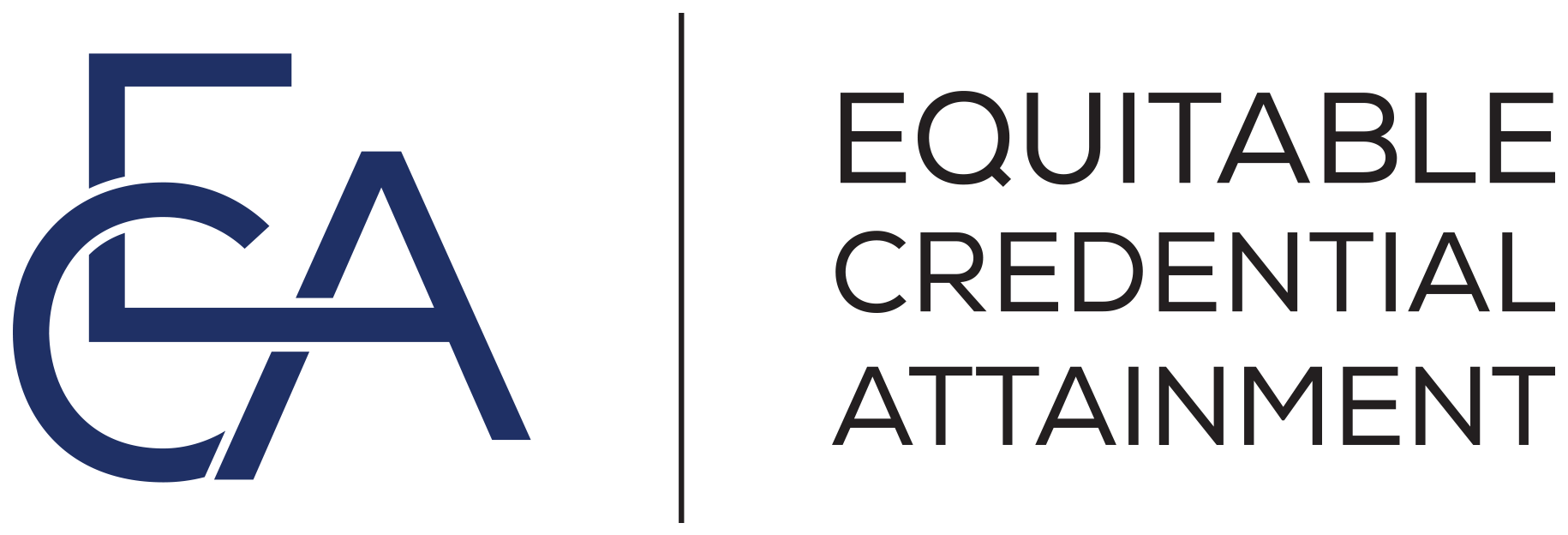
In this phase, teams will begin to implement their plans and determine how to remain collaborative while individual partners leverage their expertise. This includes everything from making updates to credential/degree programs based on employer business needs to implementing the method for tracking student enrollments and completions. Throughout this phase, teams should continue to evaluate their objectives and working relationship.
After the launch of your project, you will need to evaluate how best to sustain it. Here are areas to consider as you develop a plan to maintain the work.
A key element to sustaining the work is ensuring the project is financially viable. Identify which of the following funding streams your team could use to support your workforce efforts:
- Government and public sector
- Corporate sponsorships
- Private philanthropic and charitable trusts
- Public funding
- Community foundations
- Fee for service
No matter what funding streams you pursue, there is a general life cycle for development cultivation. Walking through the stages of development as an exercise can help you create your funding strategy. Use this worksheet to help you visualize your fundraising.
Cohort Tip
Build your reputation through quality work. Utilize your network to determine the right potential funders and request introductions. Know and understand funders’ motivations before making the ask. Look for areas of alignment.
The more true you are to your organization’s mission and brand, the more easily you will be able to identify and attract funders that align with your goals and mission. Many funders seek to support work that closes equity gaps in underrepresented populations. In addition, funders actively search for established cross-sector community collaborations that can move work forward.
Resources:
- National Association of Counties (NACo) Funding Round Ups
- National League of Cities (NLC) Funding Round Ups
- Urban Institute – Blended and Braided Funding
Cohort Case Study
Clear vision and adherence to documenting your mission will increase your chances of securing funding. As a result of the work supported by the Lumina Foundation, the team in Cleveland was able to gain additional funding support. The cohort received a major grant for a building construction trades trading program. It became a strong collaboration between the Urban League and special populations. The grantor viewed the Lumina Foundation-funded work as having a clear process and roadmap, which increased Cleveland’s ability to sustain the work in the future.
Cohort Tip
There might be dollars you can utilize from your workforce investment board, your state and local entities such as townships, cities, counties and community colleges to fill funding gaps. Braided funding can ensure sustainability after a grant is complete.
Now that you are in the execution phase, it’s recommended that you reevaluate at the 18-month mark. This reevaluation can be a part of your ongoing re-centering efforts. Consider the following questions:
- Do you need to bring in more partners?
- Is what you believed to be true?
The following graphic by CivicLabs can and should be used both at the beginning of a project and at the close of a project to help you holistically evaluate your work.

Resources:
Messaging and storytelling are often overlooked. In reality, it should be at the core of your strategy. Stories are memorable and have the ability to inspire and call people to action. They can help you increase your program’s awareness, raise money, grow membership, create leads, engage stakeholders, and build trust and loyalty.
Cohort Case Study
During the pilot session, North Central Massachusetts used tailored outreach to build awareness through community studies and listening tours. Through relationships and grassroots campaigning, the cohort is well-positioned to use individual stories of the people they know personally in the community.
Cohort Tip
Share authentic stories about the individuals you are working with. This will help get more funding and awareness. Start with a memorable human story, use data points, then introduce the opportunity to join the work. Consider (hired) expert facilitation among collaboratives to advance the work more efficiently and intently. The Collective Impact Forum and other organizations have lists of roles organizations can play in collaboration.
Storytelling is a great tool to incorporate into your messaging or business pitch. Some elements of an impactful pitch include:
- Why you uniquely have the ability and partnerships to imagine something different for your community
- How additional support can help you build capacity to do this work
- Showcasing numbers to highlight potential community impact
- Highlighting what your work achieves for the community in addition to what this does for employers and businesses
- The strength of your partnerships: having employers at the table enhances the likelihood of long-term transformation
Questions to consider:
- How will you communicate successes and challenges to your community and stakeholders?
- What is the uniform message?
Cohort Tip
Each cohort that took part in the Lumina Foundation-supported work are required to produce a final presentation and narrative report. Reports and narratives like these can serve as templates for donor pitch decks.
Resources:
Scaling a program looks different in each community. Scale might focus on increasing the number of credentials offered, the number of students going through existing programs, the number of partners engaged in providing wraparound services or the number of employers committed to hiring graduates. In most cases, scale will require increased funding and staff capacity.
Scaling can also be right-sized based on program performance. You might find that an optimal size for the program might be smaller or narrower than you initially envisioned based on the data you gleaned and documented during the execution phase. For instance, scaling can help you hone your target geographies whether by contracting or expanding them.
Ideally, scaling the program to achieve growth can reach new underserved communities and populations. This could mean expanding types of programs and new employer partners.
Scaling can also help address a specific issue. It could also mean a change in target populations and the identification of micro-populations or subpopulations within a group that has specific needs such as childcare and transportation.
As you scale, consider the following:
- The risk of the benefits cliff. Sometimes helping individuals achieve access to well-paid jobs forces them to make a decision to increase their wages and career potential but lose other types of support. Understand where your community’s pain points are with the benefits cliff. Also, check your state’s benefits. The Alabama Benefits Cliff Calculator is an example of a helpful tool. Other states have similar calculators, so do some research to see what is applicable to your state.
- Living wage v. high wage positions: uncover how your specific community would define each of these.
- There is an ongoing conversation on the value of credentials vs. degrees. While there is not an agreed-upon consensus currently, this is certainly a topic to watch. While it does not directly affect chambers, the discussion does affect community colleges in many ways, and employers are key players when it comes to assessing this value.
- Where do student interests and broader regional economic interests align, and where do they differ? For example, there may be significant demand for entry-level workers in certain industries, but these jobs may not be well-paid. What opportunities exist to fulfill these workforce needs while still providing underserved communities with opportunities for upward mobility?
Scaling and Evaluating
The process of sustaining the work is circular. As a project or pilot comes to a close, and as part of your ongoing re-centering process, stakeholders should schedule time to evaluate and reflect. This will help you identify best practices, as well as aspects of your work that require adjustment to ensure greater success. This is also a good time to evaluate your stakeholders and map your community assets.
Questions to consider:
- What elements of your work were successful? Why?
- What elements of your work were not successful? Why?

Questions to consider:
- What does scale look like?
- What is the ideal stage for this work?
- What is the “end” you have in mind, and where are you today?
- Who else can be involved?
- Are there programmatic-specific questions, especially as they relate to your goals and metrics, you should ask yourself?
Resources:
